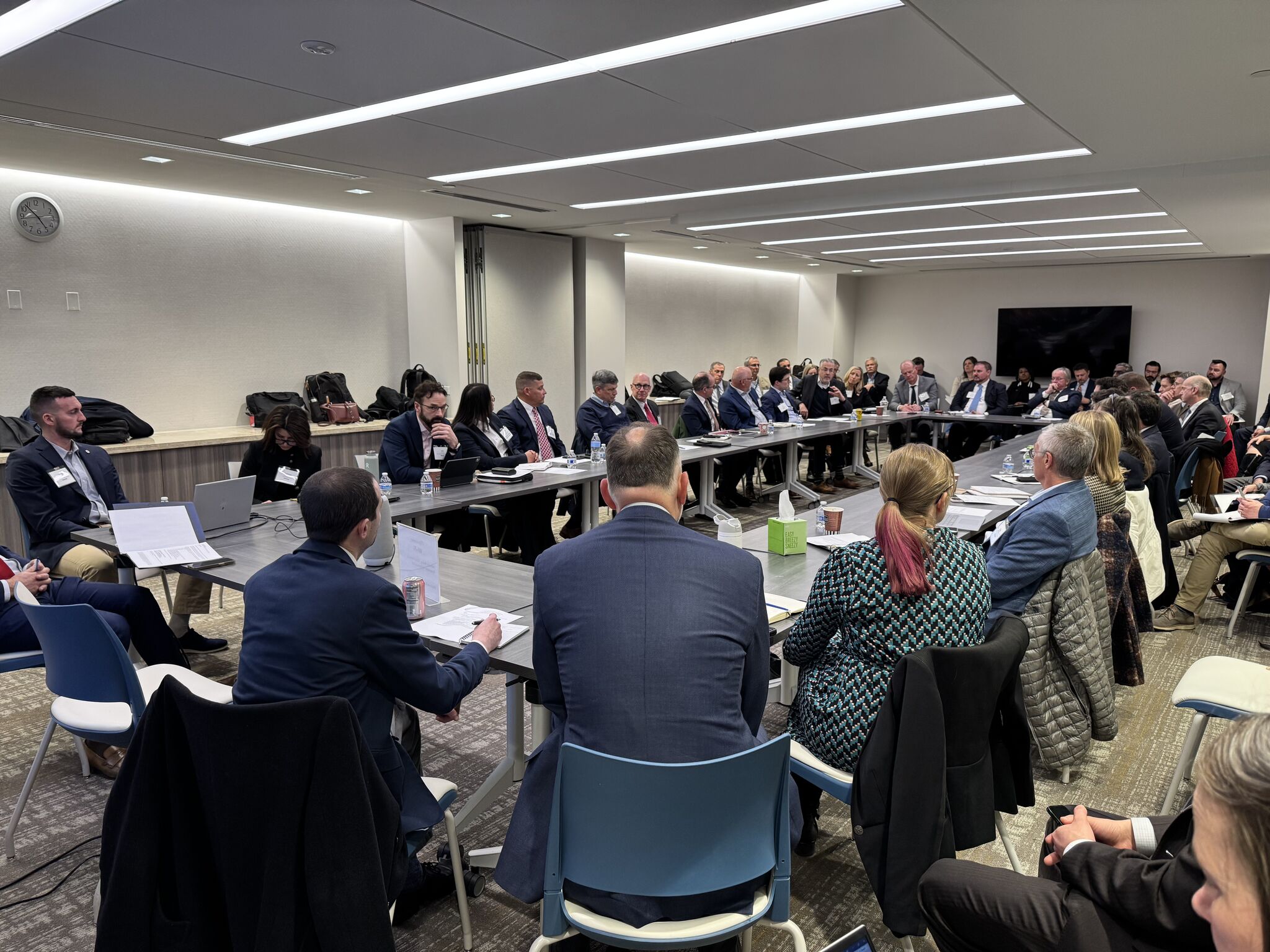How a spin on the PPP model is tackling one of America’s biggest infra problems

It began as “a happy accident”, says Katie Rosenberg, mayor of the city of Wausau, Wisconsin, who was among a group gathered at the White House early last year as part of a conference convened by vice-president Kamala Harris to find solutions to the US’s lead service line problem.
A problem, indeed, and one of the nation’s most pressing infrastructure issues. About 9.2 million lead service lines exist across the US, according to the Environmental Protection Agency, making up about 9 percent of the nation’s water line infrastructure and affecting drinking water and causing significant health problems, particularly in children.
It’s also a somewhat surprising priority issue with voters, with a November 2022 poll by the Natural Resources Defense Council finding safe drinking water the second highest ranking priority nationwide outside of the economy and inflation, and tied with reducing crime.
So, when, at the White House, Rosenberg presented Wausau’s 15-year plan to eradicate its 8,000 lead service lines, Shawn Kerachsky, chief executive of developer Community Infrastructure Partners, demanded to talk.
Kerachsky proposed a model that propelled the infrastructure asset class but that now makes some political figures shudder: a public-private partnership. Kerachsky’s proposal, though, was a variation on the theme, promulgating the community-based P3 model which CIP delivers projects through, as does his former company Corvias, which pursued the first such project in Maryland in 2015, dubbed the Clean Water Partnership.
The basic model is the same as a traditional P3, with the City of Wausau tasking CIP to complete the public works and CIP to make a profit from that. Then come the twists.
“We have a base fee that’s tied to performing the work and then we have a fee tied to incentives related to the socio-economic metrics that they incorporate into the programme,” explains Kerachsky. “There’s one on cost, one on schedules, one on local resident participation, one on target class participation and one on establishing a training and development programme.
“Our base fee is well below a market fee, so the municipality is transferring the risk to us so that if we don’t hit those incentives, it’s not a profitable engagement for us. From that perspective, it is different from traditional P3s in that there’s really no risk sharing.”
Rosenberg said that Wausau had been trying to eradicate 50 lead service lines per year, while CIP believes it could do 11-12 times that amount in a single year. The first year of the agreement, which was signed in October, will be a test year for the partnership, says Rosenberg, who admits the city’s attorneys were incredulous at the deal that had been agreed by CIP.
“CIP do the work, then we have a third-party inspector that will approve of the work and then they get paid, assuming they meet all the criteria,” she outlines. “They don’t get paid till they do the work. That takes a lot of the risk down.”
“It is different from traditional P3s in that there’s really no risk sharing”
Shawn Kerachsky
Community Infrastructure Partners
While Kerachsky’s CBP3 proposal to Rosenberg was an enticing one, it could not have been executed without the support of the $1.2 trillion Bipartisan Infrastructure Law, passed in November 2021.
The BIL allocated $15 billion to the EPA to be distributed to states specifically for lead pipe replacement, with 49 percent provided through principal forgiveness loans and the other 51 percent through cheap loans. The catch? The BIL funding is only available over five years from 2023, a timeframe in which CIP promised it could complete the work.
“We all agreed getting this work done in five years rather than 15 is better, especially when all this federal funding is on the line. As we know, if we sit on that, someone else gets it. We decided to be aggressive,” Rosenberg says.
“The real challenge is every municipal leader and utility leader doesn’t know year by year across the five years what they’re going to get as principal forgiveness and what comes as loans, which need to be repaid by ratepayers,” adds Kerachsky. “There’s no way to know until the five years is up. That’s keeping the market stagnant at this point.”
The CBP3 project in Wausau has a total cost of about $80 million and received $5.8 million from the EPA, consisting of $3.6 million in principal forgiveness and the rest through a loan with a 0.25 percent interest rate. That funding, according to Rosenberg, was “critical”, since Wausau wouldn’t have been able to do the project without it.
“The idea we asked for $5.8 million and we got it is brand new, it’s wild,” says Rosenberg.
The $15 billion provided by the BIL is certainly groundbreaking, although the solution may well require more creative thinking like that shown by CIP and Wausau. President Biden’s original proposal when devising the landmark infrastructure law was to allocate $45 billion towards the ambition of achieving 100 percent lead pipe replacement within 10 years, towards the upper end of the $28 billion to $47 billion the Brookings Institute estimates is needed to achieve this goal.
“If this works the way we think it will, the sky’s the limit; we can do all kinds of things fixing our infrastructure”
Katie Rosenberg
Mayor of Wausau
Reaching replicability
As Rosenberg cautions, it’s early days to judge the CBP3 deal, especially as it’s the first time the model has been used to tackle lead service lines and is only one of a few times the model has been used overall since it was introduced by the EPA in 2015 to treat stormwater infrastructure.
There’s no shortage of interest from other financial investors, according to Kerachsky, as the private sector looks to revitalise the P3 model that has seen its fortunes fluctuate over the years.
“[Financial investors are] super interested in this structure. I have these conversations once or twice a week with different interested investors,” he maintains. “The larger cities that have lots of lead pipelines, even when those [BIL] dollars are used up, they’re still going to need some financing solutions, be it bonds, private markets or other related infrastructure initiatives, that’s when this conversation gets more serious.”
However, Kerachsky does issue a note of caution, as states and cities analyse how to implement the model without increasing customer user rates.
“We are working very hard with the support of our national partners, the states, the EPA, different vested entities, but it’s just been really slow adoption for a lot of the nuanced reasons. There’s a lot of different things at play that still need to fall into place as the states try and get this money through the door.”
As Kerachsky educates interested parties on the private side, Rosenberg has found herself doing something similar on the public side.
“We’ve had folks reaching out to us from across the country, such as the water authorities in New Orleans, so it’s getting a lot of attention. People don’t really understand how it’s going to work and I say, ‘watch us go’.”
Rosenberg is certainly on a journey, having not enacted a P3 of any kind since becoming Wausau’s mayor in 2020, but is now eyeing further opportunities from the Biden administration’s infrastructure funding.
“I do think there’s opportunity to be met, especially when thinking about the Inflation Reduction Act and the money it has available for energy savings. If this works the way we think it will, the sky’s the limit; we can do all kinds of things fixing our infrastructure,” she argues. “It does feel like we have a lot of pressure, we have to get this done right. We have a lot of eyes looking at us.”
With all the trials and tribulations of the traditional P3 model, the weight of history is also bearing down on the 40,000 people of Wausau.
Related
How SenseiNode Is Building Proof-of-Stake Infrastructure in Latin America
A lot of attention is paid to the decentralization of the Bitcoin network.Bitcoin miners should set up shop in a number of different jurisdictions in order to p
The Infrastructure of Racial Justice Is Under Attack. We Must…
President Donald Trump began February with a proclamation that Black History Month offered “an occasion to celebrate the contributions of so many Black Am
Bomb threat found “non-credible”: American Airlines after Delhi-bound flight diverted…
American Airlines has said that the "bomb threat on board", due to whi
Big infrastructure investment plans take shape in America
Amtrak and dozens of major industry partners representing construction, manufacturing, rail supply, engineering, and other sectors convened for an industr













